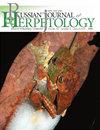南苏丹苏德湿地尼罗鳄(Crocodylus niloticus)对人类和牲畜的袭击
IF 0.9
4区 生物学
Q3 ZOOLOGY
引用次数: 1
摘要
尼罗鳄(Crocodylus niloticus)广泛分布于东非的河流系统和湿地,在当地可能与当地人类社区发生严重冲突。在南苏丹(东非)苏德湿地,研究了人与鳄鱼冲突(HCC)及其对当地社区生活和生计的影响。方法包括面对面访谈和对渔民和其他来自河流社区的人进行结构化问卷调查。调查问卷的重点是(i) 2018年至2020年期间尼罗鳄袭击人类和牲畜的次数,(ii)袭击的月份,(iii)袭击的地点,以及(iv)受害者在袭击时的活动。大多数受访者回应说,尼罗河鳄确实对他们的生命构成了严重威胁:2018年至2020年期间,共有23人被鳄鱼袭击并死亡,其中100%的人是致命的。此外,在同一时期,还杀死了166头牲畜,共有355头牲畜遭到袭击(其中大部分逃脱了袭击)。本研究表明,旱季(10月至3月)是鳄鱼袭击的高峰期,迫切需要对当地河流社区进行环境教育和意识,以尽量减少南苏丹HCC的强度。本文章由计算机程序翻译,如有差异,请以英文原文为准。
Attacks by Nile Crocodiles (Crocodylus niloticus) on Humans and Livestock in the Sudd Wetlands, South Sudan
Nile Crocodiles, Crocodylus niloticus, are widespread along the riverine systems and wetlands of East Africa, and may locally be involved into serious conflicts with local human communities. A research study was conducted to investigate Human-Crocodiles Conflicts (HCC) and its impacts on lives and livelihoods of local communities in the Sudd Wetlands in South Sudan (East Africa). The methodology involved face-to-face interviews and structured questionnaire to fishers and other persons from riverine communities. The questionnaire focused on (i) numbers of attacks by Nile Crocodiles on humans and livestock, (ii) months of attacks, (iii) locations of attacks, and (iv) activity of victims at the time of attacks, from 2018 to 2020. The majority of the interviewees responded that Nile Crocodiles do represent a serious threat to their lives: a total of 23 persons were attacked and killed by crocodiles between 2018 and 2020, with 100% of the attacks to humans being fatal. In addition, 166 heads of livestock were killed during the same period, and a total of 355 livestock were attacked (most of them escaped the attack). The present study revealed that the peak season of attacks by crocodiles was the dry season (October – March), and that there is urgent need of environmental education and awareness for local riverine communities in order to minimize the intensity of the HCC in South Sudan.
求助全文
通过发布文献求助,成功后即可免费获取论文全文。
去求助
来源期刊

Russian Journal of Herpetology
ZOOLOGY-
CiteScore
1.70
自引率
0.00%
发文量
29
期刊介绍:
Russian Journal of Herpetology is an international multi-disciplinary journal devoted to herpetology. Russian Journal of Herpetology accepts original papers on ecology, behavior, conservation, systematics, evolutionary morphology, paleontology, physiology, cytology and genetics of amphibians and reptiles.
Types of Contributions:
-original papers
-invited or contributed reviews on specific topics
-short communications on topics of immediate interest, new methods and ideas in progress
-notices of meetings, symposia, and short courses
-book reviews
 求助内容:
求助内容: 应助结果提醒方式:
应助结果提醒方式:


